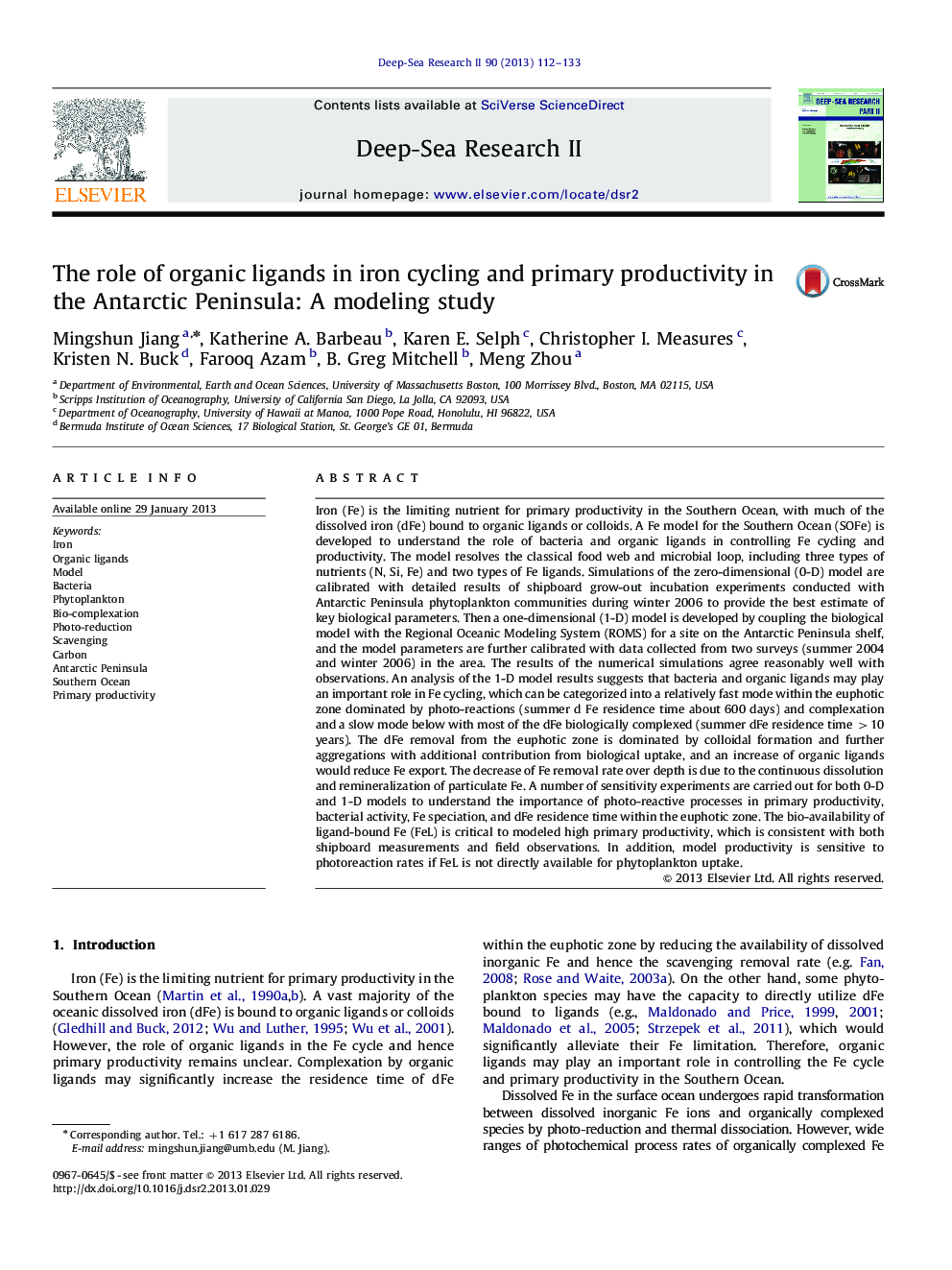| کد مقاله | کد نشریه | سال انتشار | مقاله انگلیسی | نسخه تمام متن |
|---|---|---|---|---|
| 4536622 | 1626449 | 2013 | 22 صفحه PDF | دانلود رایگان |

Iron (Fe) is the limiting nutrient for primary productivity in the Southern Ocean, with much of the dissolved iron (dFe) bound to organic ligands or colloids. A Fe model for the Southern Ocean (SOFe) is developed to understand the role of bacteria and organic ligands in controlling Fe cycling and productivity. The model resolves the classical food web and microbial loop, including three types of nutrients (N, Si, Fe) and two types of Fe ligands. Simulations of the zero-dimensional (0-D) model are calibrated with detailed results of shipboard grow-out incubation experiments conducted with Antarctic Peninsula phytoplankton communities during winter 2006 to provide the best estimate of key biological parameters. Then a one-dimensional (1-D) model is developed by coupling the biological model with the Regional Oceanic Modeling System (ROMS) for a site on the Antarctic Peninsula shelf, and the model parameters are further calibrated with data collected from two surveys (summer 2004 and winter 2006) in the area. The results of the numerical simulations agree reasonably well with observations. An analysis of the 1-D model results suggests that bacteria and organic ligands may play an important role in Fe cycling, which can be categorized into a relatively fast mode within the euphotic zone dominated by photo-reactions (summer d Fe residence time about 600 days) and complexation and a slow mode below with most of the dFe biologically complexed (summer dFe residence time >10 years). The dFe removal from the euphotic zone is dominated by colloidal formation and further aggregations with additional contribution from biological uptake, and an increase of organic ligands would reduce Fe export. The decrease of Fe removal rate over depth is due to the continuous dissolution and remineralization of particulate Fe. A number of sensitivity experiments are carried out for both 0-D and 1-D models to understand the importance of photo-reactive processes in primary productivity, bacterial activity, Fe speciation, and dFe residence time within the euphotic zone. The bio-availability of ligand-bound Fe (FeL) is critical to modeled high primary productivity, which is consistent with both shipboard measurements and field observations. In addition, model productivity is sensitive to photoreaction rates if FeL is not directly available for phytoplankton uptake.
Journal: Deep Sea Research Part II: Topical Studies in Oceanography - Volume 90, June 2013, Pages 112–133